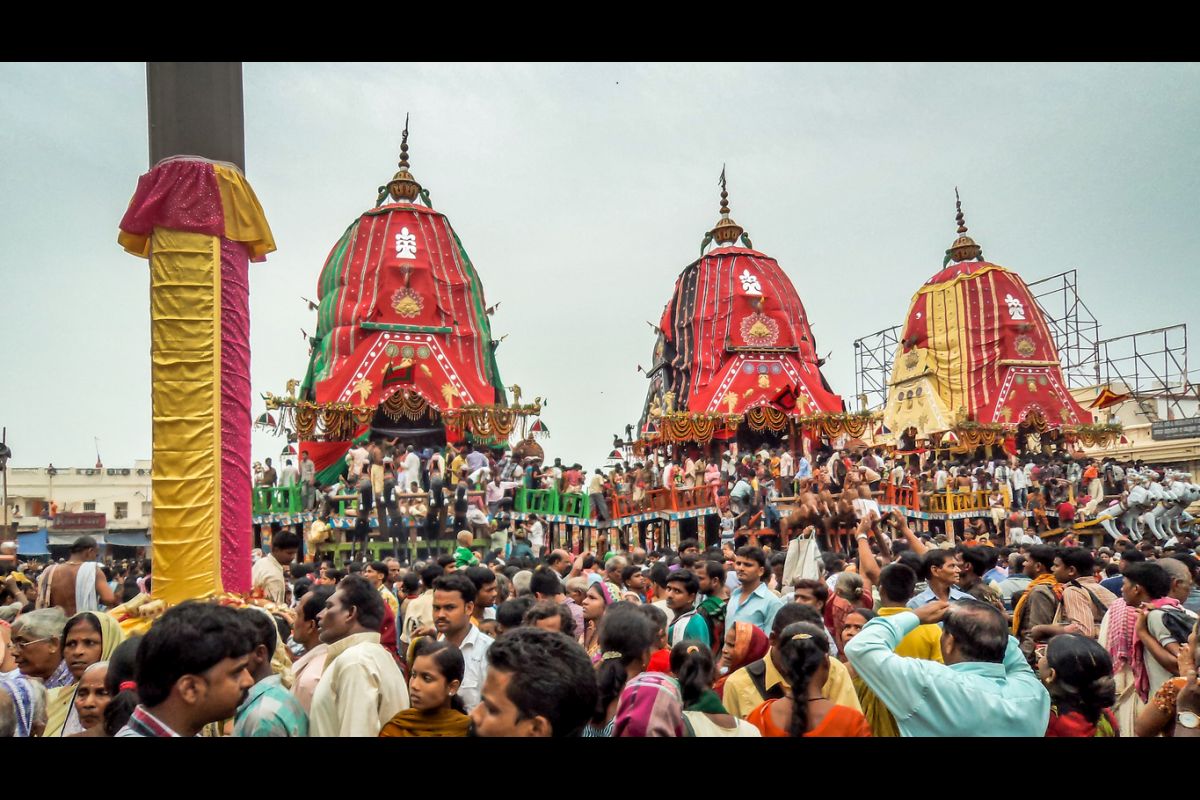Orissa HC seeks enhanced monthly pension for persons with disabilities
The Orissa High Court has asked the state government to take a considerate view of enhancing the monthly pension provided…
The word Jagannath itself means “Lord of the World”. This year Rath Yatra will start on 4th July and will end on 15th July.

(Representational photo: Getty Images)
One of the most awaited festivals in Orissa is the Jagannath Rath Yatra. It honours the visit of Lord Jagannath to his birthplace Gundicha Temple, also his aunt’s home, along with his elder brother Balabhadra and sister Subhadra.
The word Jagannath itself means “Lord of the World”. This year Rath Yatra will start on 4th July and will end on 15th July. As per the traditional Odia calendar, the Rath Yatra begins on the second day of Shukla Paksha of the Hindu lunar month of Ashadha.
When Ashadha is followed by another month of Ashadha, a special occurrence which comes in every 9 to 19 years, then a “Nabakalebar” ritual takes place. As part of the Nabakalebar ritual, the wooden idols in the temples are replaced with new ones. In the last century, the ritual was performed in 1912, 1931, 1950, 1969, 1977, 1996, and in the present one in 2015.
Advertisement
The idols of the Gods are made out of wood and every year these idols need to be changed as they decay over time. The new idols are made out of neem wood. However, the trees which are selected need to have certain characteristics such as a specific number of branches, colour and location.
The process for selecting the neem wood is done in a procession called “Banajag Yatra” where a contingent of priests, servants and carpenters set out from the Jagannath Temple to find the appropriate neem trees.
When the Rath Yatra starts, the wooden idols of the deities are taken from Jagannath Temple to the Gundicha Temple. Then these are placed in decorative chariots followed with chants. Before the Yatra begins, the idols are washed with 109 buckets of water in a ritual called “Snana Purnima”. It is believed that deities get a fever after they are washed hence they are kept in isolation, away from the public view. This is called “Ansara”.
The holy ritual of Chhera Pahara is performed by the royal successor of Orissa. In this, he places the idols on the chariot and sweeps it with a broom which has a golden handle. After cleaning the chariot, he decorates it with flowers. The ground on which it will move is also cleaned by the king after which sandalwood is sprinkled on it. Lastly, the deities are brought from the temple by the king and are placed on the chariot.
The preparations of the chariot start on the day of Akshay Tritiya. The three idols are almost 50 meters in height and are pulled by hands using long ropes. It is believed that pulling ropes add on to a person’s good karma and their bad deeds are forgiven.
As the procession starts the chariot of Lord Balram is pulled first, followed by Goddess Subhadra, and that of Lord Jagannath at last. The devotees and tourists can be seen singing chants and beating drums. The air is filled with enthusiasm and excitement.
The ritual dates of the Jagannath Rath Yatra 2019 are:
July 4 – Sri Gundicha: Deities are placed on the chariots and taken to the Gundicha temple. The first chariot to move is of Lord Balabhadra and then Subhadra’s and the last one being that of Jagganath. Pulling of the chariots starts around 4 PM.
July 8 – Hera Panchami: Devotees carry Goddess Lakshmi to Gundicha temple as it is believed that Goddess Lakshmi gets concerned when Lord Jagganath does not return. To search for him she goes to Gundicha temple.
July 12 – Bahuda Yatra: The return of the chariots into the Jagganath temple through Lion’s Gate entrance. This starts at 4 PM
July 13 – Suna Besha: This ritual was introduced during the reign of king Kapilendra Deb in 1430. During this, the deities are decorated with gold ornaments. The ritual starts in the evening at 5 PM and goes on till 11 PM.
July 15 – Niladri Biajaya: Deities are placed back inside Jagannath Temple.
Advertisement